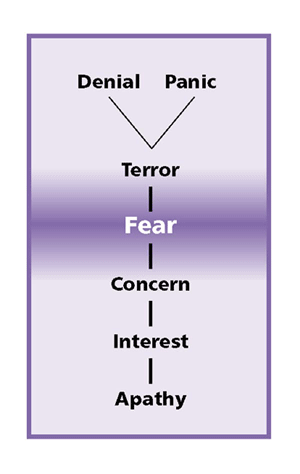In February 2005 I had a chance to spend a day with many of the top pandemic people at the US Department of Health and Human Services (HHS) and the US Centers for Disease Control and Prevention (CDC). I made the strongest case I could for alerting the American public to the risk of an H5N1 pandemic – for shaking people by their collective lapels and persuading them that family and community preparedness should be a priority.
I failed. The collective wisdom of the group was that, yes, pandemic preparedness was an important government priority. But trying to make it an important public priority would require frightening people … and that was simply too high a price to pay. The psychological toll and the economic impact could be incalculable.
That summer US President George Bush read John Barry’s book on 1918, The Great Influenza. And a couple of months after that, Katrina led White House strategists to decide that, for a while at least, Cassandra’s doomsday predictions might provide a better role model than Pollyanna’s over-optimism. By the end of 2005, HHS and CDC were in the forefront of an orchestrated federal campaign to sound the alarm about pandemic preparedness.
Have you noticed any signs of pandemic preparedness panic? Are your friends suffering from pandemic preparedness post-traumatic stress disorder? Has a massive pandemic preparedness market selloff hurt your share price? I don’t think so.
The pandemic “fear campaign,” as its critics rightly called it, was modestly successful. It was a decent start on what will have to be a 5-year or 10-year effort to get the US public emotionally and logistically ready for a pandemic. (We hope we are given that much time.) As I write this in early December 2006, we’re in a lull. Pandemic preparedness is old news in the mainstream media. But when the story becomes newsworthy again – perhaps when the first bird with Asian H5N1 virus is found in the North America – we will start at a higher level of public awareness and concern than we started in 2005.
Much of the private sector, meanwhile, is about where HHS and CDC were nearly two years ago: convinced that pandemic preparedness is important, but reluctant to frighten customers or employees. Client after client tells me that the company is busy getting ready for a possible pandemic – but quietly. Why quietly? Because they don’t want to “unduly frighten people.”
What about duly frightening people?
 During consultations and presentations on pandemic risk communication, I typically draw a diagram representing the “fear dimension” of emotional arousal.
During consultations and presentations on pandemic risk communication, I typically draw a diagram representing the “fear dimension” of emotional arousal.
When I ask the group where on the scale they want their stakeholders to be with respect to pandemic preparedness, the typical choice is “concern.” When I advocate for “fear” instead I get a lot of pushback. The group’s usual solution is to add another label, “high concern.”
I think my clients are imagining a cowering fear; a paralyzing fear; a swarming mass-hysteria panic-fear. But for the most part people are sturdy – responding to fearful situations with initial anxiety and riveted attention, followed quickly by resilient response, and then by integrating the new fear into their daily lives. Pretty quickly – sadly, in a way – people adapt. Many people even become too apathetic again.
On this diagram, the level of emotional arousal most conducive to precaution-taking is fear – proportionate fear. Concern is too low; terror is too high. Sustained fear would be optimal for preparedness (though not optimal for normal living). But fear isn’t sustainable. The best we can manage is an oscillation between fear (when something newsworthy is happening) and concern (when it isn’t).
My wife was once a university psychiatrist. Students used to say to her, “I want to break up with my boyfriend, but I don’t want to hurt his feelings.” Her answer: “That isn’t one of the choices. When you tell him hurtful news, you can’t skip the part where he feels hurt.”
Scaring people is scary. But if you want people to prepare for a possible pandemic, you can’t skip the part where they feel frightened.
I’ll have more to say about the dynamics of fear in my next column.
Copyright © 2006 Regents of the University of Minnesota. Originally published on
the CIDRAP Business Source website, December 20, 2006. Reproduced with permission.

